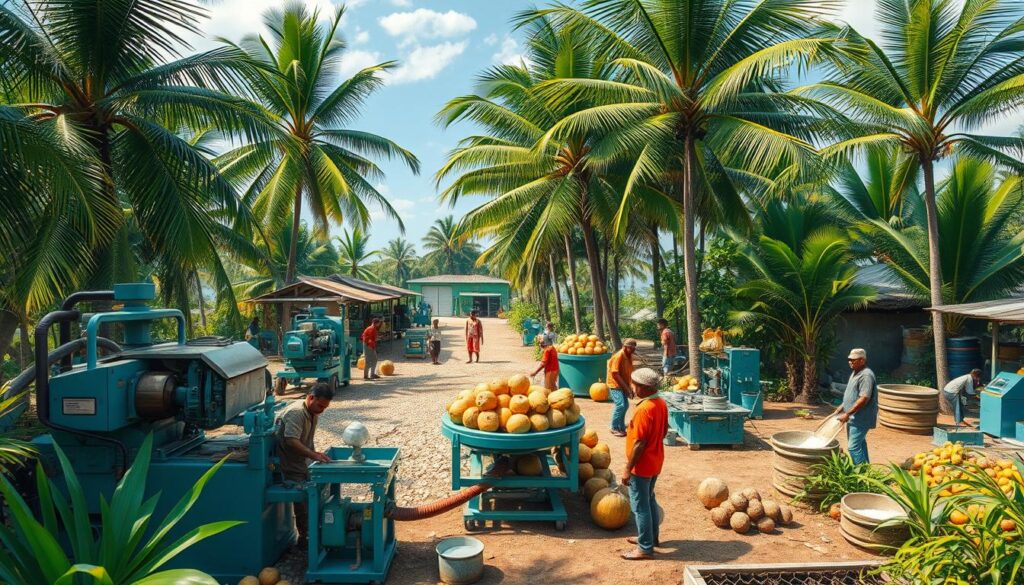Sri Lanka Declares Bankruptcy Amid Economic Crisis 2022
Sri Lanka, an island nation of 22 million people, faces its worst economic crisis since 1948. The country has declared bankruptcy. Prime Minister Ranil Wickremesinghe announced negotiations with the IMF as a bankrupt nation.
Financial collapse has led to severe inflation, expected to hit 60% by year-end. Foreign exchange reserves are nearly depleted. This has caused shortages of essential goods and price hikes for basic items.
Sri Lanka’s debt-to-GDP ratio has risen since 2010. Foreign debt reached $56.3 billion, 119% of GDP in 2021. Foreign reserves plummeted from $7.6 billion in 2019 to $50 million by May 2022.
In April 2022, Sri Lanka defaulted on its sovereign debt for the first time. The country faced a total debt repayment of $8.6 billion in 2022. This included both local and foreign debt.
From 2009 to 2019, Sri Lanka’s external debt doubled. Large-scale infrastructure projects contributed to this increase. This has worsened the current debt restructuring crisis.
Key Takeaways
- Sri Lanka declared bankruptcy amid its worst economic crisis since independence in 1948.
- The country is negotiating with the IMF as a bankrupt nation, making the situation more challenging.
- Unprecedented levels of inflation, near-depletion of foreign exchange reserves, and shortages of essential goods are major consequences of the financial collapse.
- Sri Lanka’s debt-to-GDP ratio has been increasing since 2010, with foreign debt reaching 119% of its GDP in 2021.
- The country faced a total debt repayment of $8.6 billion in 2022, leading to its first sovereign default in history.
Causes of Sri Lanka’s Economic Collapse
Sri Lanka’s economic crisis stems from poor tax decisions, excessive money printing, and rising external debt. Tax cuts in 2019 reduced government revenue, causing budget deficits. The Central Bank printed money to cover spending, ignoring IMF advice.
External debt played a crucial role in the collapse. Sri Lanka’s foreign debt soared from $11.3 billion in 2005 to $56.3 billion in 2020. The debt-to-GDP ratio hit 119% in 2021, becoming unsustainable.
By May 2022, usable foreign reserves dropped to $50 million. This led to severe shortages of essential goods and widespread public unrest.
Impact of COVID-19 Pandemic
COVID-19 worsened Sri Lanka’s fragile economy. The country’s economy shrank by 3.6% in 2020. Key sectors like tourism and remittances suffered greatly.
The pandemic exposed weaknesses in Sri Lanka’s agricultural sector. The government’s sudden shift to organic farming in 2021 caused crop yields to plummet.
Economic mismanagement, high debt, and COVID-19 pushed Sri Lanka towards bankruptcy. Foreign reserves fell from $8 billion in November 2019 to under $2 billion by December 2021.
This led to long blackouts, fuel shortages, and a severe humanitarian crisis. Urgent reforms and international support are vital for Sri Lanka’s recovery and stability.
Sri Lanka Declares Bankruptcy Amid Severe Economic Crisis in 2022
Sri Lanka defaulted on its foreign debt in April 2022. This was the first default since independence. Foreign reserves fell to $1.9 billion, insufficient for $4 billion in debt repayments.
Prime Minister Wickremesinghe addressed parliament, stating the economy had collapsed. The country couldn’t pay for essential imports like food and fuel. Inflation soared to 50%, causing widespread shortages.
Several factors led to this crisis. Economic mismanagement and COVID-19’s impact on tourism were key issues. The 2019 tax cuts depleted the treasury as the pandemic hit.
Foreign currency reserves dropped to $250 million. Sri Lanka struggled to pay for imports and defend its currency. The rupee depreciated by 80%.
The country owed $51 billion but had only $25 million in usable reserves. This was far below the $6 billion needed to stay afloat. Annual foreign debt repayments reached 9.2% of GDP.
The economic crisis severity left Sri Lanka unable to meet its financial obligations. The situation highlighted the urgent need for economic reforms and international support.
Consequences of the Financial Crisis
Sri Lanka’s financial crisis has severely impacted its population. The country’s foreign exchange reserves are nearly gone. This has caused shortages of essential goods and fuel, leading to widespread economic hardship.
Depletion of Foreign Exchange Reserves
Sri Lanka’s foreign reserves have dropped to just $25 million. The country needs $6 billion to survive the next six months. This lack of reserves makes importing necessities extremely difficult.
Shortages of Essential Goods and Fuel
Sri Lankans struggle daily with shortages of essential goods and fuel. Families face power cuts up to 13 hours per day. The cost of daily essentials has doubled in just one month.
Fuel queues in cities are growing longer, affecting tuk-tuk drivers and residents. The healthcare sector lacks lifesaving medicines, impacting medical care quality.
Rising Inflation and Economic Hardship
Inflation has reached 54.6% and may rise to 70%. The currency has devalued by 80%, making imports much more expensive. Many Sri Lankans now face malnutrition and protein deficiency, with children at high risk.
The crisis has forced schools to close due to fuel shortages. Students must rely on online classes for the third year in a row.
Government Response and IMF Negotiations
Sri Lanka’s government has sought help from the IMF due to the economic crisis. Prime Minister Wickremesinghe admitted negotiations are complex because of the country’s bankruptcy. The government aims to secure a four-year loan program from the IMF.
Sri Lanka plans to submit a debt restructuring plan to the IMF by August. They’re also working with India, Japan, and China to form an aid consortium. These efforts aim to support the nation during this difficult time.
The government has introduced work-from-home policies and closed schools to save fuel. Public protests have intensified, with calls for President Rajapaksa’s resignation. Despite challenges, Sri Lankans showed unity during Vesak celebrations, symbolizing hope to overcome the crisis.
Progress has been made in debt restructuring negotiations. The goal is to keep foreign debt payments below 4.5% of GDP from 2027 to 2032. Agreements with creditors allow Sri Lanka to defer loan payments until 2028.
Loan repayments will be on concessional terms until 2043. The successful restructuring of domestic debt in 2023 shows commitment to resolving the crisis. These agreements are expected to provide relief to Sri Lanka’s economy.
President Wickremesinghe has outlined a four-step economic reconstruction plan. It includes working with the IMF and implementing fiscal discipline. The goal is to transform Sri Lanka into a developed nation by 2048.
The government is increasing tax revenue and managing expenditure to improve the fiscal balance. However, Sri Lanka still faces challenges like insufficient foreign reserves. Further international assistance is needed to support recovery and long-term economic stability.




